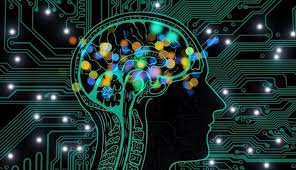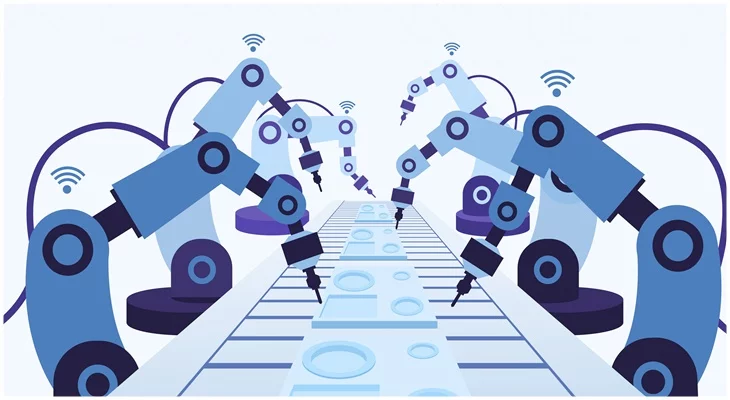Best Machine Learning Algorithms learn and improve when exposed to extra data. The "learning" component of ML refers to how those algorithms change their data processing methods over time. So, an ML algorithm is a program that can alter its settings. It can do so based on previous performance in making predictions about a dataset.
ML Algorithms classify as either supervised or unsupervised. Supervised learning algorithms function with input data and desired output data via labeling. Whereas unsupervised algorithms deal with data that is neither classed nor labeled. Unsupervised algorithms, for example, could also categorize unsorted data based on similarities and contrasts.
Machine Learning algorithms classify into three different types:
Supervised Best Machine Learning Algorithms
Assume you are a teacher who is in charge of a class. The teacher already knows the correct answers. But, the learning process does not end until the pupils do as well. Supervised Machine Learning Algorithms function on this premise. The algorithm is the student who learns from a training dataset. It then produces predictions corrected by the teacher. Also, this learning process repeats until the algorithm reaches the desired level of performance.
Unsupervised Machine Learning Algorithms : Best Machine Learning Algorithms
In this scenario, there is no teacher for the class. The poor pupils have to figure it out on their own. This means there is no exact answer to learning and no tutor for Unsupervised ML Algorithms. The algorithm also stays unsupervised to discover the underlying structure in the data. It also has to learn more and more about the data itself.
Algorithms for Reinforcement Machine Learning
These are hypothetical pupils. They learn from their own mistakes over time. Reinforcement Machine Learning Algorithms learn the best actions through trial and error. This also means that the algorithm determines the next action by learning behaviors. These are based on their present state that will maximize the reward in the future.
Top Machine Learning Algorithms
Machine learning methods address complicated real-world data challenges. We've now examined the various sorts of machine learning algorithms. Let's look at the best machine learning algorithms available and employed by data scientists.
Naïve Bayes Classifier Algorithm
Manually classifying data texts such as a web page, a paper, or an email is challenging. The Naïve Bayes Classifier Algorithm handles this task. This procedure functions on the Bayes Theorem of Probability. It assigns the element value to a population from one of the possible categories.
P(y|X) = \frac{P(X|y) P(y)}{P(X)}
where y is class variable and X is a dependent feature vector (of size n) where:
X = (x_1,x_2,x_3,.....,xn)
Email spam filtering is one application of the Naïve Bayes Classifier Algorithm. This algorithm finds a place in Gmail to determine whether an email is spam or not.
K Means Clustering Algorithm
Assume you wish to look up the term "date" on Wikipedia. "Date" might now apply to a certain fruit, a specific day, or even a romantic evening with your sweetheart. Using the K Means Clustering Algorithm, Wikipedia clusters web pages that discuss the same topics.
In general, the K Means Clustering Algorithm employs K clusters to act on a given data set. As a result, the output has K clusters with the input data distributed among them.
Support Vector Machine Algorithm
For classification or regression issues, it uses the Support Vector Machine Algorithm. The data separates into several classes by locating a certain line (hyperplane). This line divides the data set into multiple classes. The Support Vector Machine Algorithm attempts to locate the hyperplane. Also, doing so minimizes the distance between the classes. This increases the likelihood of correctly categorizing the data.
A comparison of stock performance for stocks in the same sector is an example. It shows how the Support Vector Machine Algorithm functions. This aids financial firms in managing investment decisions.
The Apriori Algorithm
The IF-THEN format finds a place in the Apriori Algorithm to build association rules. This suggests that IF event A occurs, then event B is likely to occur as well. For example, IF a person purchases a car, they MUST ALSO buy auto insurance. This association rule is generated by the Apriori Algorithm. It examines the people who purchased vehicle insurance after purchasing a car.
Google auto-complete is an example of how the Apriori Algorithm functions. When you input a term into Google, the Apriori Algorithm searches and displays the associated words typed after that word.
Linear Regression Algorithm
The Linear Regression Algorithm depicts the relationship between two variables. Here, one is independent, and one is dependent. It displays the effect on the dependent variable of changing the independent variable in any way. The independent variable also refers to as the explanatory variable. Meanwhile, the dependent variable refers to the factor of interest.
The Linear Regression Algorithm is a risk assessment in the insurance sector. Linear Regression analysis helps to determine the frequency of claims for customers. It then calculates the increased risk as the customer's age grows.
Logistic Regression Algorithm
The Linear Regression Algorithm predicts continuous values. Whereas the Logistic Regression Algorithm predicts discrete values. As a result, Logistic Regression is best suited for binary classification. In Logistic Regression, an event classifies as 1 if it occurs and 0 if it does not. It projects the chance of a specific event's occurrence based on the factors provided.
Decision Trees Algorithm
Assume you wish to choose a location for your birthday. As a result, many factors influence your decision. Factors such as "Is the restaurant Italian?", "Does the restaurant have live music?" "Is the restaurant close to your house?" etc. Each of these questions has a YES or NO answer that influences your choice.
This is what happens in the Decision Trees Algorithm. Using a tree branching method, all alternative outcomes of a decision are also shown here. Also, the core nodes of the tree represent tests on various qualities. The branches of the tree represent the results of the tests. The leaf nodes represent the choice reached after computing all the attributes.
In the banking business, the Decision Trees Algorithm helps to classify loan applicants. It is also based on their likelihood of defaulting on loan payments.
Algorithm of Random Forests
The Random Forests Algorithm addresses the shortcomings of the Decision Trees Algorithm. The accuracy of the outcome reduces as the number of decisions in the tree increases. There are several decision trees in the Random Forests Algorithm. These represent diverse statistical probabilities.
The CART model combines all these trees into a single tree. We get the algorithm's final forecast by polling the outcomes of all decision trees. In the automobile sector, this algorithm predicts the breakdown of an automobile element.
K Nearest Neighbours Algorithm
The K Nearest Neighbours Algorithm categorizes data points based on a similar measure. This measure can be such as the distance function. For each new data point, a prediction is made. It scans the complete data set for the K most comparable occurrences. It then summarizes the output variable for these K instances.
This could be the mean of the outcomes in a regression problem. Or it can be the mode in a classification problem. The K Nearest Neighbors Algorithm may take a large amount of memory or space to keep all the data. But, it only calculates when needing a prediction, just in time.
Artificial Neural Networks Algorithm
Neurons in the human brain are the foundation of our memory and sharp wit. Artificial Neural Networks attempt to recreate neurons in the human brain. They do so by constructing interconnected nodes to one another. These neurons receive information from another neuron. They conduct various actions as needed. They then provide the information to another neuron as output.
Human facial recognition is an example of Artificial Neural Networks. Depending on the number of photographs in the database, this could take many hours. Whereas the human mind can do it quickly.
How to Choose Best Machine Learning Algorithms?
Dimensions of the Training Data
It is normally suggested to collect a large amount of data to make credible forecasts. But, data availability is a limitation. If the training data is minimal, choose methods with a high bias/low variance. They can be such as Linear regression, Nave Bayes, or Linear SVM.
Output Accuracy/Interpretability : Best Machine Learning Algorithms
A model's accuracy means that it predicts a response value that is close to the genuine response value for that observation. An interpretable method means that each individual predictor can be clearly understood. But, flexible models provide more accuracy at the expense of low interpretability.
Usage of an algorithm depends on the goal of the business problem. If the inference is the goal, restrictive models are preferable. Moreover, if accuracy is the goal, flexible models are preferable. In general, as a method's flexibility rises, so does its interpretability.
Training Time or Speed
Higher accuracy usually necessitates more training time. Algorithms also take longer to train on big amounts of training data. In real-world applications, the choice of algorithm depends on these two aspects.
The Variety of Features
The dataset may contain a vast number of features, not all are useful and noteworthy. When it comes to certain types of data, the number of features might be rather vast. A huge number of characteristics can hinder some learning algorithms. This also makes the training time prohibitively long. Moreover, SVM is better suited for data with a large feature space but few observations.
Conclusion
In conclusion, machine learning algorithms are only one piece of the puzzle. You'll have to deal with optimizers, data cleaning, feature selection, feature normalization. Also, you have to deal with hyperparameter tuning besides algorithm selection.
When you've completed all that and created a model that works for your data, it's time to launch it and then update it when conditions change. Also, managing machine learning models in production is a whole different challenge.
Try a variety of algorithms and compare their results to get the best one for your unique activity. Also, consider using ensemble approaches, which often yield higher accuracy.
You may also like to read:
Machine Learning In Quantitative Finance: Trends And Applications
Medical Diagnosis With Machine Learning: Advantages And Limitations






